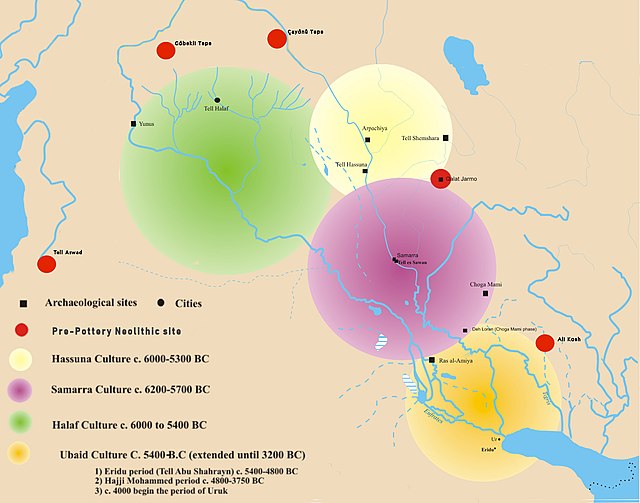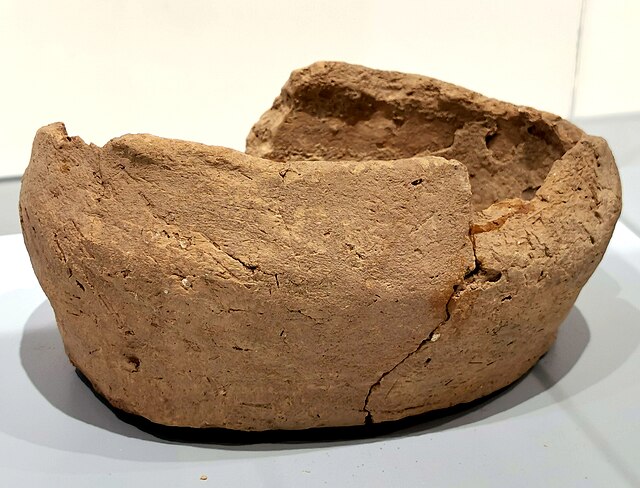The Yarmukian culture was a Pottery Neolithic A (PNA) culture of the ancient Levant. It was the first culture in prehistoric Syria and one of the oldest in the Levant to make use of pottery. The Yarmukian derives its name from the Yarmuk River, which flows near its type site of Sha'ar HaGolan, near Kibbutz Sha'ar HaGolan at the foot of the Golan Heights. This culture existed alongside the Lodian, or Jericho IX culture and the Nizzanim culture to the south.
Yarmukian pottery vessel, Sha'ar HaGolan.
In the archaeology of Southwest Asia, the Late Neolithic, also known as the Ceramic Neolithic or Pottery Neolithic, is the final part of the Neolithic period, following on from the Pre-Pottery Neolithic and preceding the Chalcolithic. It is sometimes further divided into Pottery Neolithic A (PNA) and Pottery Neolithic B (PNB) phases.
After the initial Pre-Pottery Neolithic phase from northwestern Mesopotamia to Jarmo (red dots, circa 7500 BCE), the Pottery Neolithic culture of Mesopotamia in the 7th–5th millennium BCE was centered around the Hassuna culture in the north, the Halaf culture in the northwest, the Samarra culture in central Mesopotamia and the Ubaid culture in the southeast, which later expanded to encompass the whole region.
Yarmukian pottery vessel, Sha'ar HaGolan.
Pottery bowl from Jarmo, Mesopotamia, 7100-5800 BCE.
Jar decorated with diverse geometric patterns; 4900-4300 BC; ceramic; by Halaf culture; Erbil Civilization Museum (Erbil, Iraq)




